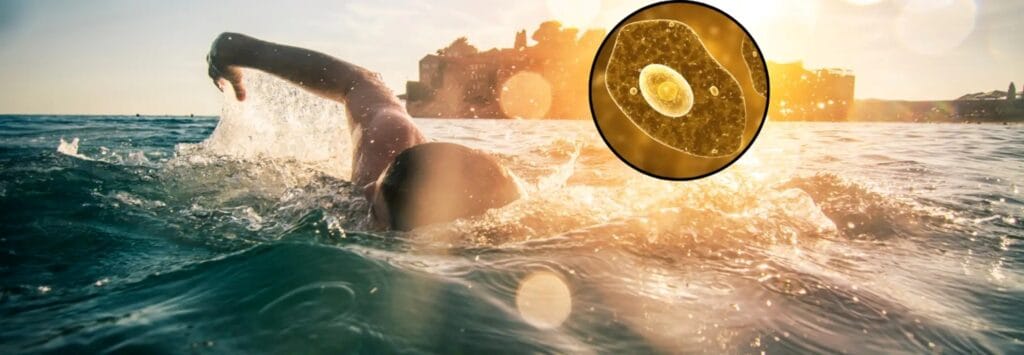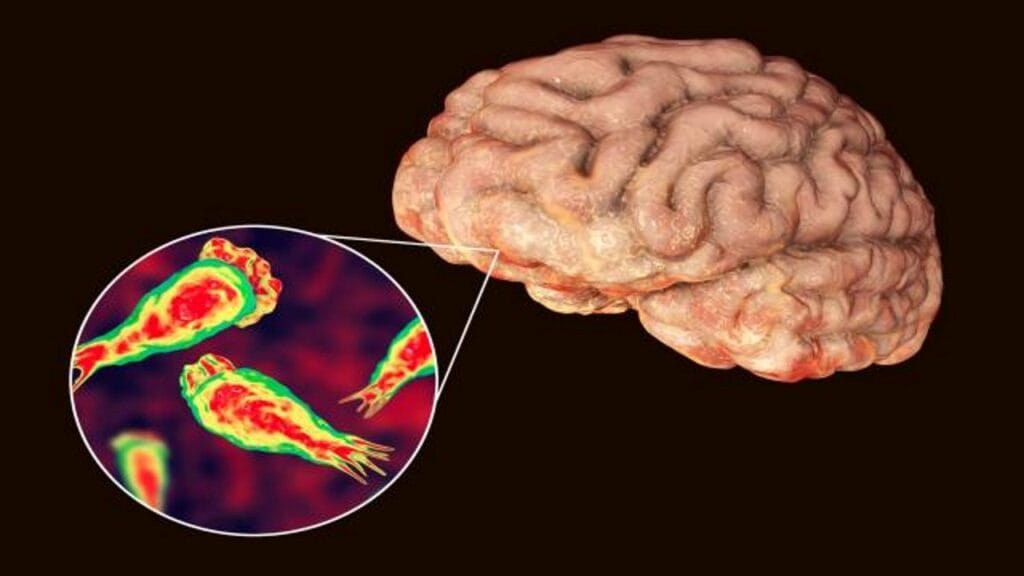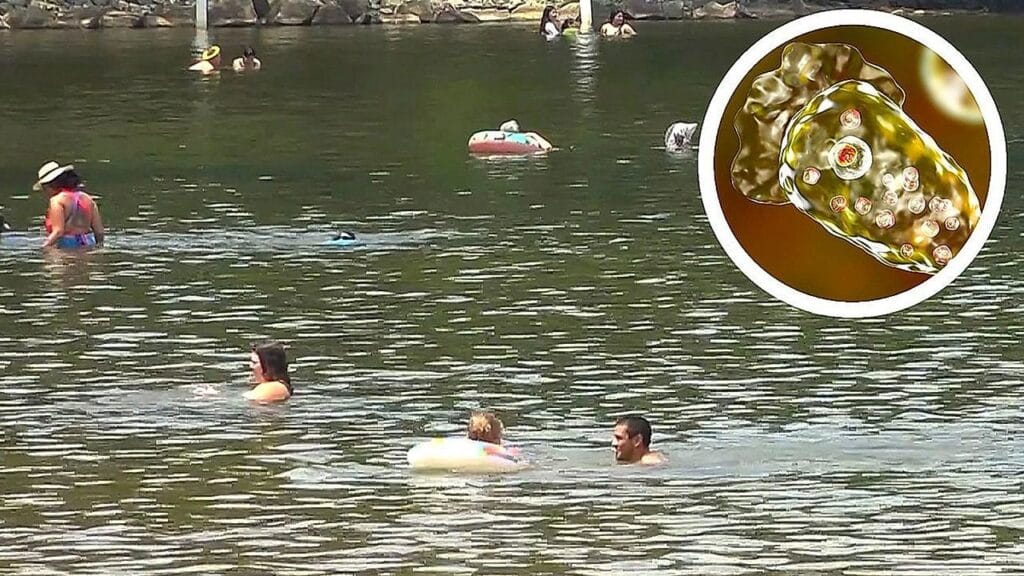
In the summer of 2025, a new health concern is drawing serious attention in South Carolina. A suspected case of the brain-eating amoeba, scientifically known as Naegleria fowleri, has been linked to recreational swimming in Lake Murray. As temperatures soar across the state, health officials have issued warnings to locals and tourists alike about the potential risk of infection.
📍 What Is the Brain-Eating Amoeba?

Naegleria fowleri is a microscopic organism that lives in warm, fresh water such as lakes, rivers, and hot springs. It is known as the “brain-eating amoeba” because it can cause a rare and often fatal brain infection called Primary Amebic Meningoencephalitis (PAM). This occurs when contaminated water enters the body through the nose, typically while swimming or diving.
🌡️ Lake Murray Water Temperature and Risk Level
In July 2025, Lake Murray’s water temperature has been recorded between 86°F and 90°F, creating ideal conditions for the amoeba to thrive. According to scientists and public health experts, any water temperatures above 84°F significantly increase the chance of Naegleria fowleri being present.
Warm weather and shallow, stagnant freshwater environments create a perfect breeding ground for this dangerous organism.
⚠️ Symptoms of Brain-Eating Amoeba Infection

The symptoms of infection usually begin 1 to 9 days after exposure and may include:
- Severe headache
- Fever
- Nausea and vomiting
- Stiff neck
- Loss of balance
- Hallucinations
- Seizures
Once symptoms begin, the disease progresses quickly. The infection is extremely rare, but when it does occur, it is almost always fatal.
🛡️ How to Stay Safe at Lake Murray in 2025
Although infection is rare, it’s critical to take precautions, especially during hot summer months. Here are the top safety tips for Lake Murray visitors:
 Health Safety Tips
Health Safety Tips
- Avoid jumping or diving into warm freshwater lakes like Lake Murray during summer.
- Use nose clips or keep your head above water to prevent water from entering your nose.
- Avoid stirring up sediment where the amoeba lives—stay away from the bottom of the lake.
- Always check for health advisories or warnings from the South Carolina Department of Health (DHEC).
 Who Is at Risk in South Carolina?
Who Is at Risk in South Carolina?
Everyone who swims in warm freshwater is at risk, but the infection is more common in:
- Children and young adults
- Swimmers who jump feet-first or dive head-first into shallow water
- People with frequent exposure to untreated lake water
The recent case of Jaysen Carr, a Columbia SC resident, is currently being investigated for possible infection from Lake Murray. While official confirmation is pending, the case has prompted urgent reviews of lake safety in South Carolina.
 Understanding Naegleria Fowleri
Understanding Naegleria Fowleri
 Fast Facts:
Fast Facts:
- It is not transmitted by drinking water.
- It enters the brain through the nose.
- Most infections happen in southern U.S. states during summer.
- There is no cure, but a few survivors have been saved through early diagnosis and antifungal treatment.
Public health officials emphasize that while the infection is extremely rare, it is crucial to take simple steps to prevent it.
 Lake Murray Safety Summary (2025)
Lake Murray Safety Summary (2025)
Feature | Details |
Risk Area | Lake Murray, South Carolina |
Water Temperature Range | 86°F – 90°F |
Risk Season | July – September |
Infection Name | Primary Amebic Meningoencephalitis (PAM) |
Amoeba Name | Naegleria fowleri |
Risk Factor | Water entering the nose |
 Helpful Resources and Health Alerts
Helpful Resources and Health Alerts
If you’re planning to visit Lake Murray, always check official sources first:
- South Carolina DHEC: https://www.scdhec.gov
- CDC – Naegleria fowleri: https://www.cdc.gov/parasites/naegleria/
 Conclusion: Don’t Panic, Stay Informed
Conclusion: Don’t Panic, Stay Informed
The brain-eating amoeba in South Carolina is rare but serious. With Lake Murray water temperatures rising, now is the time to act wisely. Avoid risky behavior in warm freshwater and keep yourself and your family safe.
Stay updated with ManivaBlog Health, your trusted source for travel safety, public health, and wellness.


